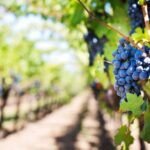POPULATION MOVEMENTS AND GENETICS – IELTS READING

Nghiên cứu di truyền học về việc di cư
A Study of the origins and distribution of hum on populations used to be based on archaeological and fossil evidence. A number of techniques developed since the 1950s however have placed the study of these subjects on a sounder and more objective footing. The best information on early population movements is now being obtained from the archaeology of the living body the clues to be found in genetic material.
Nghiên cứu về nguồn gốc và sự phân bố của dân số loài người được sử dụng dựa trên bằng chứng khảo cổ và hóa thạch. Tuy nhiên, một số kỹ thuật được phát triển từ những năm 1950 đã đặt nghiên cứu về các chủ đề này theo một quan điểm sáng suốt và khách quan hơn. Thông tin tốt nhất về những cuộc di cư dân số thời kì đầu hiện nay được lấy từ ‘khảo cổ học của cơ thể sống’, các manh mối được tìm thấy trong vật liệu di truyền.
B Recent work on the problem of when people first entered the Americas is an example of the value of these new techniques. North-east Asia and Siberia have long been accepted as the launching ground for the first human colonisers of the New World1. But was there one major wave of migration across the Bering Strait into the Americas, or several? And when did this event, or events, take place? In recent years, new clues have come from research into genetics, including the distribution of genetic markers in modern Native Americans2.
Các nghiên cứu gần đây về thời điểm mà con người đầu tiên xâm nhập vào châu Mỹ là một ví dụ về giá trị của những kỹ thuật mới này. Đông Bắc Á và Siberia từ lâu đã được chấp nhận như nền tảng cho những người thực dân đầu tiên của Thế giới Mới. Nhưng liệu có phải là một làn sóng di cư chính qua eo biển Bering vào châu Mỹ, hay chỉ là thiểu số? Và khi nào sự kiện này, hoặc các sự kiện khác diễn ra? Trong những năm gần đây, những manh mối mới bắt nguồn từ việc nghiên cứu về di truyền học, bao gồm sự phân bố các gen di truyền ở những người Mỹ thời hiện đại.
C An important project, led by the biological anthropologist Robert Williams, focused on the variants (called Gm all types) of one particular protein – immunologic G – found in the fluid portion of human blood. All proteins ‘drift’, or produce variants, over the generations, and members of an interbreeding human population will share a set of such variants. Thus, by comparing the Gm allotypes of two different populations (e.g. two Indian tribes), one can establish their genetic distance, which itself can be calibrated to give an indication of the length of time since these populations last interbred.
Một dự án quan trọng do nhà nhân chủng học sinh học Robert Williams đưa ra tập trung vào các biến thể (gọi là Gm allotypes) của một protein -immunoglobin G – được tìm thấy trong phần dịch của máu người. Tất cả các protein “drift”, hoặc tạo ra các biến thể, qua các thế hệ, và các thành viên của một quần thể nhân giống giữa các loài sẽ chia sẻ một tập hợp các biến thể như vậy. Do đó, bằng cách so sánh các kiểu gen của hai quần thể khác nhau (ví dụ như hai bộ lạc Ấn Độ), người ta có thể thiết lập ‘khoảng cách’ di truyền của chúng, nó có thể được hiệu chuẩn để thể hiện khoảng thời gian kể từ khi các quần thể này lai chung.
D Williams and his colleagues sampled the blood of over 5,000 American Indians in western North America during a twenty- year period. They found that their Gm allotypes could be divided into two groups, one of which also corresponded to the genetic typing of Central and South American Indians. Other tests showed that the Inuit (or Eskimo) and Aleut3 formed a third group. From this evidence, it was deduced that there had been three major waves of migration across the Bering Strait. The first, Paleo – Indian wave more than 15,000 years ago was ancestral to all Central and South American Indians. The second wave, about 14,000-12,000 years ago, brought No-Dene hunters ancestors of the Navajo and Apache (who only migrated south from Canada about 600 or 700 years ago). The third wave perhaps 10,000 or 9,000 years ago saw the migration from Northeast Asia of groups ancestral to the modem Eskimo and Aleut.
Williams và các đồng nghiệp của ông đã lấy mẫu máu của hơn 5,000 người da đỏ người Mỹ ở miền Tây Bắc Mỹ trong thời gian hai mươi năm. Họ phát hiện ra rằng các chuỗi Gm của họ có thể được chia thành hai nhóm, một trong số đó cũng tương ứng với loại gen của Trung và Nam Mỹ. Các thử nghiệm khác cho thấy người Inuit (hoặc Eskimo) và Aleut3 thành lập nhóm thứ ba. Từ bằng chứng này, nó đã được suy luận rằng đã có ba đợt sóng di cư chính qua eo biển Bering. Đầu tiên, Paleo- lndian, làn sóng di cư cách đây hơn 15,000 năm trước, là tổ tiên của tất cả người da đỏ ở Trung và Nam Mỹ. Làn sóng thứ hai, cách đây khoảng 14,000-12,000 năm, đã đưa thợ săn Na-Dene, những người tổ tiên của Navajo và Apache (chỉ di chuyển về phía Nam từ Canada khoảng 600 hoặc 700 năm trước). Làn sóng thứ ba, có lẽ là 10,000 hoặc 9,000 năm trước, đã chứng kiến sự di cư từ các nước Đông Bắc Á của các nhóm tổ tiên đến Eskimo và Aleut hiện đại.
E How far does other research support these conclusions? Geneticist Douglas Wallace has studied mitochondrial DNA4 in blood samples from three widely separated Native American groups: Pima- Papa go Indians in Arizona, Maya Indians on the Yucatan peninsula, Mexico, and Ticuna Indians in the Upper Amazon region of Brazil. As would have been predicted by Robert Williams’s work, all three groups appear to be descended from the same ancestral (Paleo-Indian) population.
Các nghiên cứu khác hỗ trợ những kết luận này như thế nào? Nhà di truyền học Douglas Wallace đã nghiên cứu ADN ty thể ADN4 trong các mẫu máu của ba nhóm người Mỹ bản địa khác nhau: người da đỏ Pima-Papago ở Arizona, người Maya Ấn Độ trên bán đảo Yucatán, Mexico và người Ấn Độ Ticuna ở vùng Amazon ở phía bắc Brazil. Như đã được tiên đoán bởi công trình của Robert Williams, cả ba nhóm này đều xuất thân từ cùng một tổ tiên (Paleo-lndian).
F There are two other kinds of research that have thrown some light on the origins of the Native American population; they involve the study of teeth and of languages. The biological anthropologist Christy Turner is on expert in the analysis of changing physical characteristics in human teeth. He argues that tooth crowns and roots5 have a high genetic component, minimally affected by environmental and other factors. Studies carried out by Turner of many thousands of New and Old World specimens, both ancient and modern, suggest ‘hot the majority of prehistoric Americans are linked to Northern Asian populations by crown and root traits such as incisor6 shoveling (a scooping out on one or both surfaces of the tooth), single-rooted upper first premolars6 and triple-rooted lower first molars6.
According to Turner, this ties in with the idea of a single Paleo-Indian migration out of North Asia, which he sets at before 14,000 years ago by calibrating rates of dental micro-evolution. Tooth analyses also suggest that there were two later migrations of Na-Denes and Eskimo- Aleut.
Có hai loại nghiên cứu khác đã làm sáng tỏ nguồn gốc của dân số người Da đỏ; những nghiên cứu này liên quan đến nghiên cứu về răng và ngôn ngữ. nhà nhân chủng học sinh học Christy Turner là một chuyên gia về phân tích sự thay đổi các đặc tính vật lý trong răng người. Ông lập luận rằng răng và răng rễ có thành phần di truyền cao, ít bị ảnh hưởng bởi các yếu tố môi trường và các yếu tố khác. Các nghiên cứu của Turner về hàng ngàn mẫu vật của Thế giới Cũ và Mới, cả cổ đại lẫn hiện đại, đều cho thấy đa số người Mỹ tiền sử có liên quan đến các quần thể Bắc Á bằng các đặc điểm vương miện và gốc rễ như hàm răng, răng hàm dưới đầu tiên có một gốc và răng hàm dưới thấp hơn 3.
Theo Turner, điều này liên quan với ý tưởng của một cuộc di cư Paleo-lndian ra khỏi Bắc Á, điều mà ông đặt ra trước 14,000 năm trước bằng cách hiệu chỉnh tỷ lệ tiến hóa vi răng. Phân tích răng cũng cho thấy có hai cuộc di cư sau đó của Na-Denes và Eskimo-Aleut.
G The linguist Joseph Greenberg has, since the 1950s, argued that all Native American languages belong to a single Amerind family, except for No-Dene and Eskimo-Aleut – a view that gives credence to the idea of three main migrations. Greenberg is in a minority among fellow linguists, most of whom favor the no I on of a great money waves of migration to account for the more than 1,000 – languages spoken at one time by American Indians. But there is no doubt that the new genetic and dental evidence provides strong backing for Greenberg’s view. Dates given for the migrations should nevertheless be treated with caution, except where supported by hard archaeological evidence.
Nhà ngôn ngữ học Joseph Greenberg, kể từ những năm 1950, đã lập luận rằng tất cả các ngôn ngữ bản thổ Mỹ đều thuộc về một gia đình Amerind, ngoại trừ Na-Dene và Eskimo-Aleut – quan điểm cho thấy ý tưởng về ba cuộc di cư chính. Greenberg là một thiểu số trong số các nhà ngôn ngữ học, hầu hết trong số họ ủng hộ ý tưởng về một làn sóng di cư to lớn để chiếm hơn 1,000 ngôn ngữ được sử dụng cùng một thời điểm bởi người Mỹ bản địa. Nhưng không có nghi ngờ gì về những bằng chứng di truyền và răng đã cung cấp sự ủng hộ mạnh mẽ cho quan điểm của Greenberg. Tuy nhiên, các thời kì được đưa ra cho các cuộc di cư nên được thận trọng, trừ khi những khu vực được hỗ trợ bởi các bằng chứng khảo cổ học khó.
1. New World: the American continent, as opposed to the so-called Old World of Europe, Asia and Africa
2. Modern Native America: an American descended from the groups that were native to America
3. Inuit and Aleut: two of the ethnic groups native to the northern region of North America (i.e. northern Canada and Greenland)
4. DNA: the substance in which genetic information is stored
5. Crown/ Root: Parts of the tooth
6. incisor/premolar/molar: kinds of teeth
Questions 14-19
Reading Passage 156 has seven sections, A-G.
Choose the correct headings for sections A-F from the list of headings below.
Write the correct number, i-x, in boxes 14-19 on your answer sheet.
____________________________________________________________
List of Headings
i The results of the research into blood-variants
ii Dental evidence
iii Greenberg’s analysis of the dental and linguistic evidence
iv Developments in the methods used to study early population movements
v Indian migration from Canada to the U.S.A.
vi Further genetic evidence relating to the three-wave theory
vii Long-standing questions about prehistoric migration to America
viii Conflicting views of the three-wave theory, based on non-genetic Evidence
ix Questions about the causes of prehistoric migration to America
x How analysis of blood-variants measures the closeness of the relationship between different populations
_____________________________________________________________
14 Section A
15 Section B
16 Section C
17 Section D
18 Section E
19 Section F
Example Answer
Section G viii
Questions 20 and 21
The discussion of Williams’s research indicates the periods at which early people are thought to have migrated along certain routes.
There are six routes, A-F, marked on the map below.
Complete the table below.
Write the correct letter, A-F, in boxes 20 and 21 on your answer sheet.
Route Period (number of years ago)
20…………… 15,000 or more
21…………… 600 to 700
Early Population Movement to the Americas

Questions 22-25
Reading Passage 156 refers to the three-wave theory of early migration to the Americas. It also suggests in which of these three waves the ancestors of various groups of modern native Americans first reached the continent.
Classify the groups named in the table below as originating from
A the first wave
B the second wave
C the third wave
Write the correct letter. A. B or C. in boxes 22-25 on your answer sheet.
Name of Group | Wave Number |
Inuil | 22 ………………… |
Apache | 23 ………………… |
Pima-Papago | 24 ……………….. |
Ticuna | 25 ………………… |
Question 26
Choose the correct letter. A. B. C or D.
Write the correct letter in box 26 on your answer sheet.
Christy Turner’s research involved the examination of ….
A teeth from both prehistoric and modern Americans and Asians
B thousands of people who live in either the New or the Old World
C dental specimens from the majority of prehistoric Americans
D the eating habits of American and Asian populations





